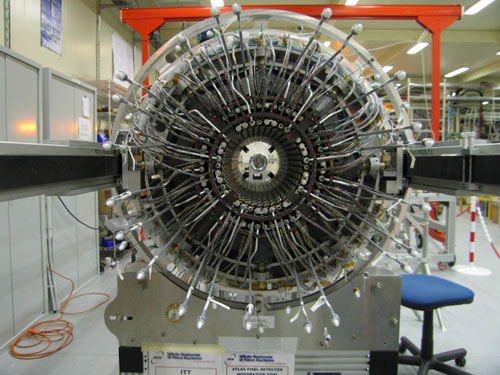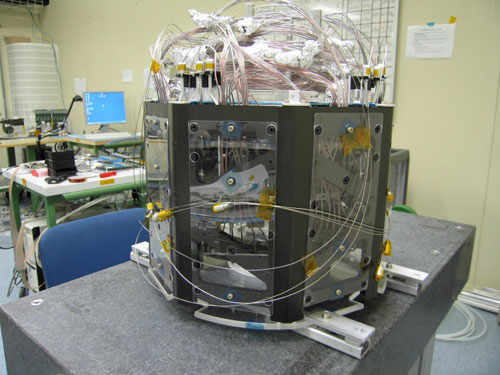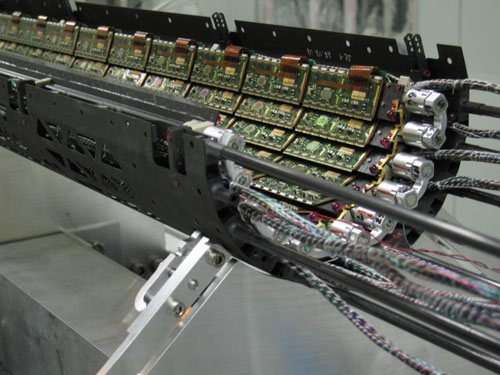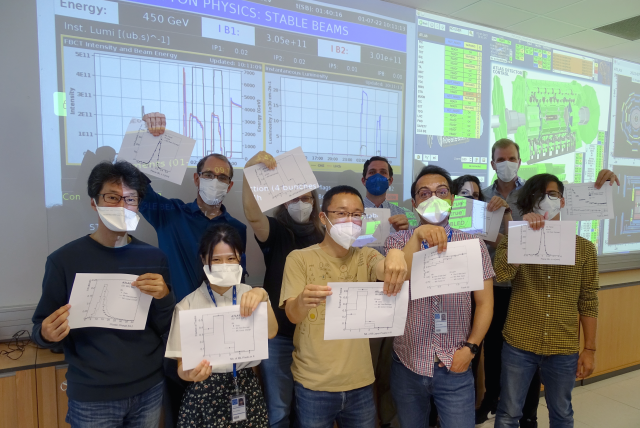The pixels system: last but not late!
4 December 2006 | By

After almost 15 years of R&D and prototyping, the ATLAS pixel detector is finally almost ready for installation in ATLAS, and its first rendez-vous with colliding beams!
The pixel detector for ATLAS is one of the smallest, but most challenging components of the experiment. It lives in the dangerous territory directly outside the beampipe, where the radiation environment is particularly fierce, and it must be roughly one million times more radiation-hard than its human designers. Starting at a radius of just 5cm from the interaction point where the proton beams collide, it occupies a volume of slightly more than one meter in length and a half meter in diameter.
In this compact region, there are eighty million channels of electronics (most of the electronics channels in ATLAS!), each capable of measuring the charge deposited by a track in a silicon pixel measuring only 50 microns by 400 microns in size (a volume of 0.005 cubic millimeters).
A total cooling capacity of 15 KWatts is available to keep it operating comfortably at -5°C. This detector is built around, and provides the support for, the central beampipe of ATLAS. It is supported on carbon fiber rails inside of the pixel support tubes which are attached to the inner radius of the semiconductor tracker (SCT) barrel and endcaps. This allows it to be installed as a complete package, with relatively simple service connections at the end of the installation process.
The pressures of resolving the many technical challenges in the construction of the Pixel Detector have pushed the installation date to April 2007, just before the huge calorimeter endcaps are closed for the first colliding beams.
All of the components of the detector are now on the CERN site, and all active components are being assembled in the SR1 cleanroom. A recent pass through this area shows the two endcaps, consisting of three disks and 6.6 million channels each. The endcap to be placed on the C-side of the pixel detector is shown here.

The barrel portion of the detector is integrated from the outside inwards, and now two of the three layers appear on the large Integration and Testing Tool, with their electrical and cooling services. This assembly already contains 1170 of the total of 1744 pixel modules used to build the detector, for a grand total of 54 million electronics channels.
The innermost layer of the Pixel Detector barrel region is known in ATLAS jargon as the Blayer, since it provides the critical vertexing information used in ATLAS to reconstruct the displaced vertices from b-quark decays (and any other short-lived particles, including c-quarks and tau-leptons). This layer is only partially assembled into two half-shells. One of them is shown here.

The final beampipe for the Pixel Detector is scheduled to arrive in SR1 the week of 4 Dec, after which the innermost B-layer will be integrated around it, and installed in the barrel before the Christmas shutdown.



